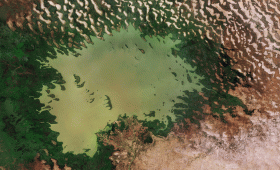Brownsberg Nature Park: Exploring Suriname’s Natural Wonder
Getting There
Brownsberg Nature Park is about 130 kilometers south of Paramaribo, Suriname’s capital. The drive takes roughly 2-3 hours, depending on traffic and road conditions. Renting a car or hiring a private taxi are your best options for reaching the park. Be prepared for some rugged terrain as you approach the park.
Best Time to Visit
Plan your visit during the dry season, from August to November. The weather is more favorable, and the trails are easier to navigate. Weekends and public holidays can be busy, so consider visiting on a weekday to enjoy a quieter experience.
Exploring the Park
Brownsberg Nature Park offers a variety of hiking trails, each providing a unique view of the lush landscapes. The park is situated on the Mazaroni plateau, overlooking the Brokopondo Reservoir, which adds to its scenic beauty.
Trails for Beginners
The Mazaroni Trail is ideal for beginners. It meanders through the rainforest, where you might spot howler monkeys, colorful butterflies, and a variety of bird species. Bring a camera to capture these moments.
Challenging Trails for Adventurers
For seasoned hikers, the Ireneval Trail offers a challenging trek with steep inclines and rugged paths. The reward is a breathtaking view of the surrounding mountains and the expansive rainforest.
Wildlife Encounters
The park is a haven for wildlife enthusiasts. It hosts around 350 bird species, including toucans and grey-winged trumpeters, and mammals like red-rumped agoutis and capuchin monkeys. Keep an eye out for these creatures, but remember that sightings of elusive animals like jaguars are rare.
Accommodation Options
Overnight stays are possible with basic camping facilities available within the park. For more comfort, consider booking a cabin or a room at a nearby eco-lodge, which offers modern amenities.
Local Transportation
While the park’s trails are best explored on foot, hiring a local guide is advisable for those wanting to delve deeper into the park’s remote areas. Guides offer valuable insights into the park’s history and biodiversity.
Challenges and Considerations
Be aware of ongoing issues with illegal gold mining, which poses a threat to the park’s ecosystem. The presence of mercury in the soil is a concern, so stay informed and follow guidelines to minimize your impact. Despite these challenges, the park remains a popular destination, attracting around 20,000 visitors annually.




